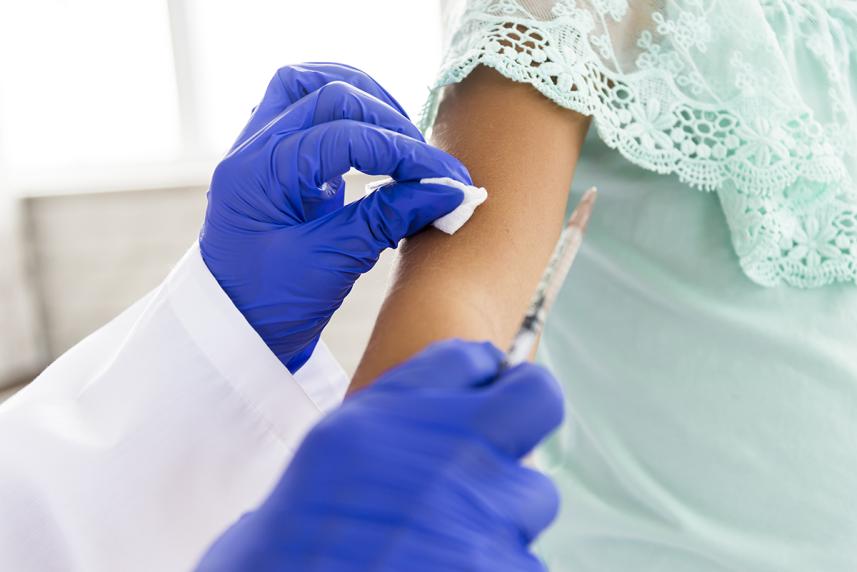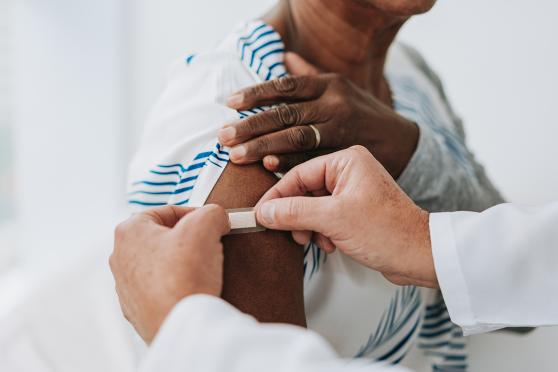Do your kids fear needles? Here's how to help
Needle phobia is very common in young people. And while most kids grow out of it, there’s a lot that parents can do to ease their anxiety, starting with these tips.

Whether it’s for a vaccine or a blood test, getting stuck with a needle isn’t fun for anyone. But for kids, the mere idea of a shot in the arm can cause serious anxiety, making the process nearly impossible to get through.
The fact is, though, that immunizations — and the injections that come with them — are worth the short-lived pain and mild side effects. They’re important tools for protecting kids and teens from serious diseases like measles, polio, and whooping cough. These are now preventable diseases. Before vaccines, they caused thousands of deaths each year.
So while overcoming injection anxiety can be hard on both you and your child, know that you are taking a giant step in keeping them safe and healthy. Not to mention that it will make trips to the doctor much more pleasant for everyone.
If you’re reluctant to get your child vaccinated because of a needle phobia or any other reason, talk to your doctor about your concerns.
The good news is that any fears your child has about shots will probably be temporary. While most children have needle anxiety, they tend to grow out of it. By young adulthood, only 20 to 30 percent are still afraid.
You want to do what you can to help your child overcome their fears before they enter adulthood. “[Needle anxiety] can lead to people not getting treatment for very serious conditions, or avoiding preventive measures, like immunizations, because they’re so afraid,” says Beth Salcedo, M.D., a psychiatrist and medical director of the Ross Center in Washington, D.C.
Pain, or fear of pain, is often the main motive behind kids’ dread of needles. Perhaps one bad experience with a shot left a negative impression on your child. But whatever the underlying cause, fear and anxiety can intensify pain, reinforcing that negative view.
Luckily, there are ways to cope. Whether needles cause your child or teen minor jitters or major anxiety, these tips can help them (and you) get through the process.
Before a shot
Before you even set foot in the doctor’s office or pharmacy for a shot, prepare your child to have a positive experience.
- Be honest about the experience. Knowing what to expect can help them cope and build trust between your child and their health care providers. So let them know that a shot can pinch and sting — but that it won’t hurt for long.
- Explain why they need the shot. Remind them that the shots will help keep them healthy.
- Teach your child mindfulness. When you’re worried about something, the tendency is to focus on it a lot, says Dr. Salcedo. And that can intensify negative feelings. Mindfulness meditation helps redirect their attention to the here and now — and away from that future shot. Build a mindfulness habit with the help of the MyLife Meditation app, an award-winning, 5-star-rated app. Download it and check out more than 75 activities in the "For Kids" explore library.
- Talk to your health care professional. Letting the pediatrician, nurse, or pharmacist know about your child’s anxiety helps them help you. For example, there may be something they can say during the shot to help your child calm down.
During the shot
The shot itself takes only a few seconds, but setting it up may take longer. And that’s when a child’s fears can get the best of them.
- Stay calm. Your emotional cues play a big part in how your child handles doctor’s visits and needles. Try to model the behavior you want to see in them. When you have a relaxed and upbeat attitude, it can help reassure children that there’s nothing to worry about.
- Distract them. There are lots of ways to keep the mind occupied while you wait. Play their favorite music. Cue up a funny video on your smartphone. Or play games with them — count backward from 100, recite the alphabet in reverse, think of a fruit or vegetable that starts with each letter of the alphabet.
- Suggest that they look away from the needle. For some, it helps not to know when the shot goes in.
- Teach them relaxation breathing. Taking deep, slow breaths in through your nose and out through your mouth can both reduce anxiety and help redirect your attention, says Dr. Salcedo.
- Encourage them to relax their muscles. It can make the shot less painful.
- Praise them for being brave. You can even offer them a small reward for making it through this important milestone, such as a sticker, crayons, or a trip to the park.
After the shot
It’s not uncommon to have mild side effects from vaccinations. You might notice that they develop a low-grade fever, slight fatigue, or soreness at the injection site. These are all signs that the vaccine is doing its job — training their immune systems to fight diseases — without making them sick.
But there are steps you can take to lessen their discomfort. Here are some post-shot recommendations from the Centers for Disease Control and Prevention:
- Encourage your child to move their arm around gently. This can help reduce any pain or swelling.
- Put a cool, wet washcloth on the injection site. This can help reduce soreness from the injection.
For more tips on how to help your child cope with shots, visit: cdc.gov/vaccines/parents/visit/before-during-after-shots
Long-term solutions
If your child has a true needle phobia, you may need professional help, says Dr. Salcedo, who is also a board member of the Anxiety and Depression Association of America. A trained mental health professional can develop a plan to help them overcome their fears.
Treatment for any phobia often includes cognitive behavioral therapy (CBT), aimed at resetting negative thinking. It’s effective in helping people of all ages conquer phobias.
CBT typically lasts several weeks. A trained professional will identify negative beliefs, teach your child relaxation techniques, and then gradually expose them to their fear. “It’s a structured hierarchy, where we take the least fearful things and desensitize people to the anxiety around those. Then you go up the hierarchy as you master each level,” Dr. Salcedo explains.
For needle anxiety, a CBT exposure challenge might include these steps:
- Thinking about getting an injection
- Listening to someone else talk about getting an injection
- Watching someone you know get an injection (or a YouTube video of the process). If you can bring your child to a doctor’s appointment during which you get an injection, that can be an opportunity to model a calm, positive attitude about the experience and set a good example.
- Holding and touching a needle.
- Giving an injection to an orange.
In this manner, Dr. Salcedo says, kids slowly become desensitized to the anxiety around what’s about to happen. And it will help them continue to get the care they need for years to come.


